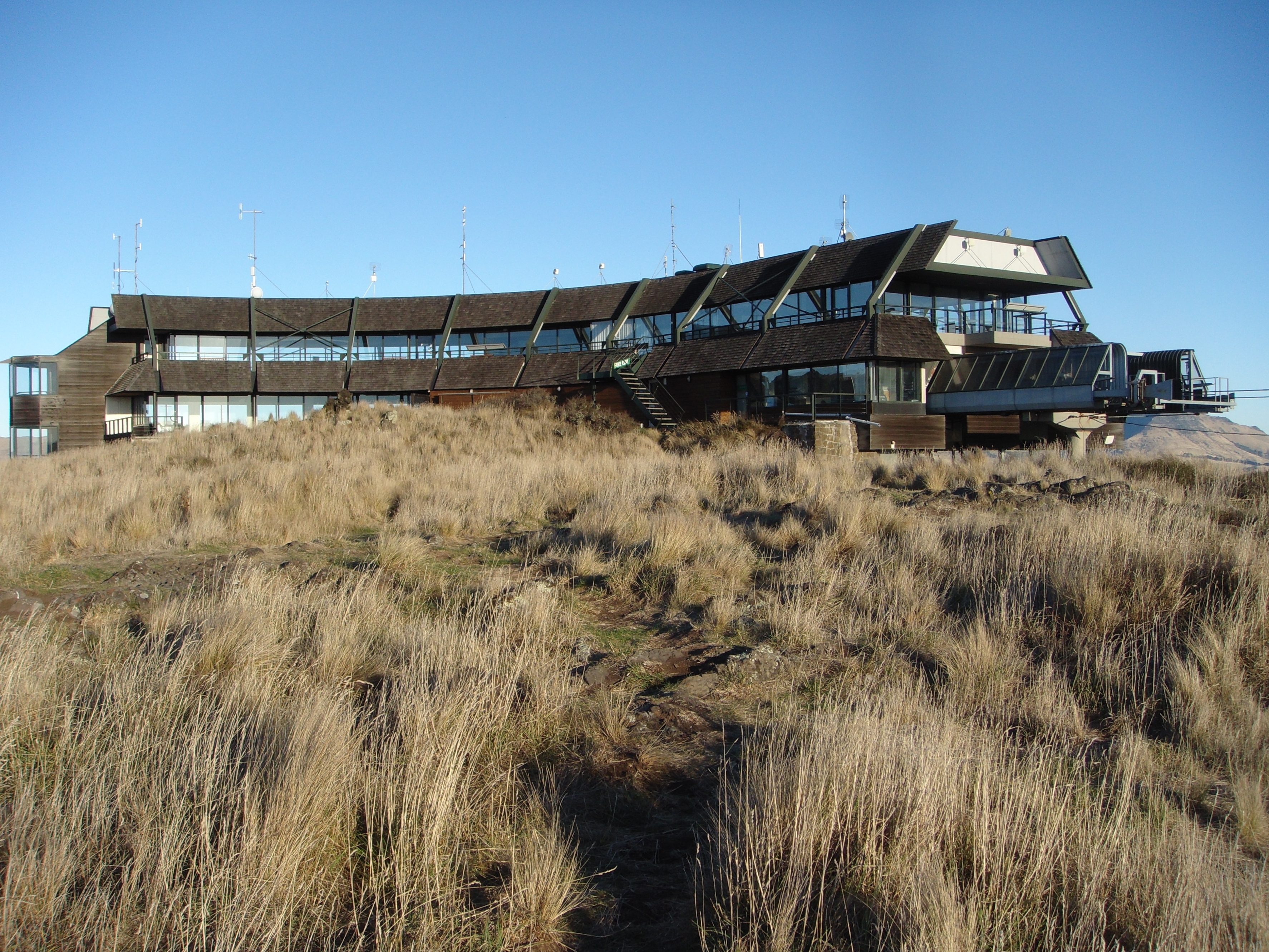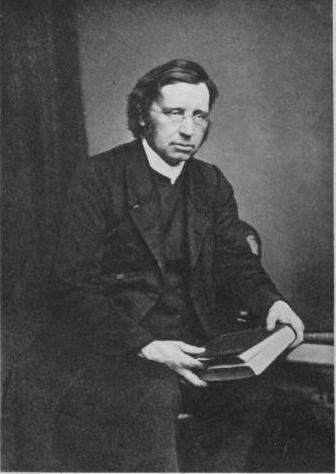|
Richard Cavendish (1794–1876)
The Hon. Richard Cavendish (23 December 1794 – 18 March 1876) was an English nobleman, politician, Member of Parliament, and a member of the Canterbury Association. Biography Cavendish was born in Waterpark, County Cork, Ireland, in 1794. He was the second son of Richard Cavendish, 2nd Baron Waterpark and Juliana Cooper. Sir Henry Cavendish, 2nd Baronet, was his grandfather. His elder brother Henry Cavendish, 3rd Baron Waterpark succeeded their father in the family titles. His sister Sarah Georgiana Cavendish married Sir George Philips, 2nd Baronet. His sister Catherine Cavendish married Bishop Thomas Musgrave. On 22 July 1841, he married Elizabeth Maria Margaret Hart at Uttoxeter. He went into civil service in 1811 for the East India Company. In the 1820s, he was a Member of Parliament. By 1831, he lived in Gwalior, India. He was an envoy in Nagpur by 1835. He became a director of the East India Company. This was followed by roles as magistrate in Stafford, deputy lieut ... [...More Info...] [...Related Items...] OR: [Wikipedia] [Google] [Baidu] |
The Honourable
''The Honourable'' (British English) or ''The Honorable'' (American English; American and British English spelling differences#-our, -or, see spelling differences) (abbreviation: ''Hon.'', ''Hon'ble'', or variations) is an honorific Style (manner of address), style that is used as a prefix before the names or titles of certain people, usually with official governmental or diplomatic positions. Use by governments International diplomacy In international diplomatic relations, representatives of foreign states are often styled as ''The Honourable''. Deputy chiefs of mission, , consuls-general and consuls are always given the style. All heads of consular posts, whether they are honorary or career postholders, are accorded the style according to the State Department of the United States. However, the style ''Excellency'' instead of ''The Honourable'' is used for ambassadors and high commissioners. Africa The Congo In the Democratic Republic of the Congo, the prefix 'Honourable' o ... [...More Info...] [...Related Items...] OR: [Wikipedia] [Google] [Baidu] |
High Sheriff Of Buckinghamshire
The High Sheriff of Buckinghamshire, in common with other counties, was originally the King's representative on taxation upholding the law in Saxon times. The word Sheriff evolved from 'shire-reeve'. Sheriff is the oldest secular office under the Crown. Formerly the sheriff was the principal law enforcement officer in the county but over the centuries most of the responsibilities associated with the post have been transferred elsewhere or are now defunct, so that its functions are now largely ceremonial. Under the provisions of the Local Government Act 1972, on 1 April 1974 the office previously known as Sheriff was retitled High Sheriff. The title of sheriff is therefore much older than the other Crown appointment, the Lord Lieutenant of Buckinghamshire, which came about in 1535. Unlike the Lord Lieutenant of Buckinghamshire, which is generally held from appointment until the holder's death or incapacity, the title of High Sheriff is appointed or reappointed annually. The Hig ... [...More Info...] [...Related Items...] OR: [Wikipedia] [Google] [Baidu] |
Port Hills
The Port Hills are a range of hills in Canterbury Region, so named because they lie between the city of Christchurch and its port at Lyttelton. They are an eroded remnant of the Lyttelton volcano, which erupted millions of years ago. The hills start at Godley Head, run approximately east–west along the northern side of Lyttelton Harbour, and continue running to the south, dividing the city from the harbour. The range terminates near Gebbies Pass above the head of the harbour. The range includes a number of summits between 300 and 500 metres above sea level. The range is of significant geological, environmental and scenic importance. History The volcano is one of two from which Banks Peninsula was originally formed 12 million years ago. The area was first populated by Māori during the 14th century. During early European settlement some 500 years later the Port Hills presented a challenging barrier between the harbour and the planned settlement of Christchurch, their s ... [...More Info...] [...Related Items...] OR: [Wikipedia] [Google] [Baidu] |
Christchurch
Christchurch ( ; mi, Ōtautahi) is the largest city in the South Island of New Zealand and the seat of the Canterbury Region. Christchurch lies on the South Island's east coast, just north of Banks Peninsula on Pegasus Bay. The Avon River / Ōtākaro flows through the centre of the city, with an urban park along its banks. The city's territorial authority population is people, and includes a number of smaller urban areas as well as rural areas. The population of the urban area is people. Christchurch is the second-largest city by urban area population in New Zealand, after Auckland. It is the major urban area of an emerging sub-region known informally as Greater Christchurch. Notable smaller urban areas within this sub-region include Rangiora and Kaiapoi in Waimakariri District, north of the Waimakariri River, and Rolleston and Lincoln in Selwyn District to the south. The first inhabitants migrated to the area sometime between 1000 and 1250 AD. They hunted moa, ... [...More Info...] [...Related Items...] OR: [Wikipedia] [Google] [Baidu] |
Mount Cavendish
Mount Cavendish is located in the Port Hills, with views over Christchurch, New Zealand and Lyttelton. It is part of the crater wall of the extinct volcano that formed Lyttelton Harbour. The Mount Cavendish Reserve displays some of the best examples of lava flow to be seen on the Port Hills. History Mount Cavendish was first transferred to the Crown for a Scenic Reserve in 1910, by the Morten Brothers. The mountain was first named Hill Morten in 1912 by Harry Ell, in recognition of the Morten family's gifts of land for the Summit Road and scenic reserves. The name Mount Cavendish was first given to nearby Mount Pleasant (after which a suburb is now named) in 1848, but did not stick and the peak of Hill Morten was named Mount Cavendish after the Hon. Richard Cavendish of the Canterbury Association. Description It is 448 metres (1,470 feet) high and falls within the Mount Cavendish Scenic Reserve, which sits at the top of the Heathcote Valley, close to the northern ... [...More Info...] [...Related Items...] OR: [Wikipedia] [Google] [Baidu] |
Edward George Wright
Edward George Wright (14 June 1831 – 12 August 1902) was an independent conservative Member of Parliament in New Zealand. Biography Wright was born in Woolwich, Kent, England, in 1831. After an education in private schools, he worked for Fox, Henderson and Co. He was the engineer for the gasworks in Rome and then worked on the naval dockyards at Royal Arsenal in Woolwich and then Aldershot. He married in September 1854 at London and went to New Zealand with his wife and their first two sons in 1857, with another one born in their chosen country. In Canterbury, he was responsible for many of the engineering works, especially bridges. He represented the Coleridge electorate from 1879 to 1881, then the Ashburton electorate from 1881 to 16 May 1884, when he resigned. He unsuccessfully contested the for . In the , he contested the electorate, but was defeated by Edwin Blake. He was successful again in the in the Ashburton electorate. In the , he was defeated in the ... [...More Info...] [...Related Items...] OR: [Wikipedia] [Google] [Baidu] |
Ashburton River / Hakatere
The Ashburton River / Hakatere is a river in the Canterbury Canterbury (, ) is a cathedral city and UNESCO World Heritage Site, situated in the heart of the City of Canterbury local government district of Kent, England. It lies on the River Stour. The Archbishop of Canterbury is the primate of ... region of New Zealand, flowing across Mid Canterbury from the Southern Alps to the Pacific Ocean. The official name of the river was amended to become a List of dual place names in New Zealand, dual name by the Ngāi Tahu Claims Settlement Act 1998. It has been identified as an Important Bird Area by BirdLife International because it supports breeding colonies of the endangered species, endangered black-billed gull. Description The river has two branches which meet from the coast, just inland of the town of Ashburton, New Zealand, Ashburton. The branches remain parallel and no more than apart for a further upstream of their confluence, finally diverging near the small s ... [...More Info...] [...Related Items...] OR: [Wikipedia] [Google] [Baidu] |
Ashburton, New Zealand
Ashburton ( mi, Hakatere) is a large town in the Canterbury Region, on the east coast of the South Island of New Zealand. The town is the seat of the Ashburton District. It is south west of Christchurch and is sometimes regarded as a satellite town of Christchurch. Ashburton township has a population of . The town is the 29th-largest urban area in New Zealand and the fourth-largest urban area in the Canterbury Region, after Christchurch, Timaru and Rolleston. Toponymy Ashburton was named by the surveyor Captain Joseph Thomas of the New Zealand Land Association, after Francis Baring, 3rd Baron Ashburton, who was a member of the Canterbury Association. Ashburton's common nickname "Ashvegas", is an ironic allusion to Las Vegas. Hakatere is the traditional Māori name for the Ashburton River. The name translates as "to make swift or to flow smoothly". History In 1858 William Turton, ran a ferry across the Ashburton river close to where the Ashburton bridge now lies ... [...More Info...] [...Related Items...] OR: [Wikipedia] [Google] [Baidu] |
Stony Stratford
Stony Stratford is a constituent town of Milton Keynes, Buckinghamshire, England. Historically it was a market town on the important route from London to Chester (Watling Street, now the A5). It is also the name of a civil parish with a town council within the City of Milton Keynes. It is in the north-west corner of the Milton Keynes urban area, bordering Northamptonshire and separated from it by the River Great Ouse. History Since at least Roman times, there has been a settlement here at the ford of Watling Street over the Great Ouse. The town's market charter dates from 1194 and its status as a town from 1215. The town name is Anglo-Saxon in origin, and means "stony ford on a Roman road". The road in this instance is Watling Street, which runs through the middle of the town and crosses the River Ouse just outside it (nowadays by bridge). In 1789, at Windmill Field (probably) in the parish of Old Stratford near Stony Stratford, an urn was uncovered which contained t ... [...More Info...] [...Related Items...] OR: [Wikipedia] [Google] [Baidu] |
Ecclesiological Society
The Cambridge Camden Society, known from 1845 (when it moved to London) as the Ecclesiological Society,History of the Society Ecclesiological Society was a learned society founded in 1839 by students at to promote "the study of |
Edward Gibbon Wakefield
Edward Gibbon Wakefield (20 March 179616 May 1862) is considered a key figure in the establishment of the colonies of South Australia and New Zealand (where he later served as a member of parliament). He also had significant interests in British North America, being involved in the drafting of Lord Durham's Report and being a member of the Parliament of the Province of Canada for a short time. He was best known for his colonisation scheme, sometimes referred to as the Wakefield scheme, which aimed to populate the new colony South Australia with a workable combination of labourers, tradespeople, artisans and capital. The scheme was to be financed by the sale of land to the capitalists who would thereby support the other classes of emigrants. Despite being imprisoned for three years in 1827 for kidnapping a fifteen-year-old girl in Britain, he enjoyed a distinguished political career. Early life Wakefield was born in London in 1796, the eldest son of Edward Wakefield (1774� ... [...More Info...] [...Related Items...] OR: [Wikipedia] [Google] [Baidu] |





